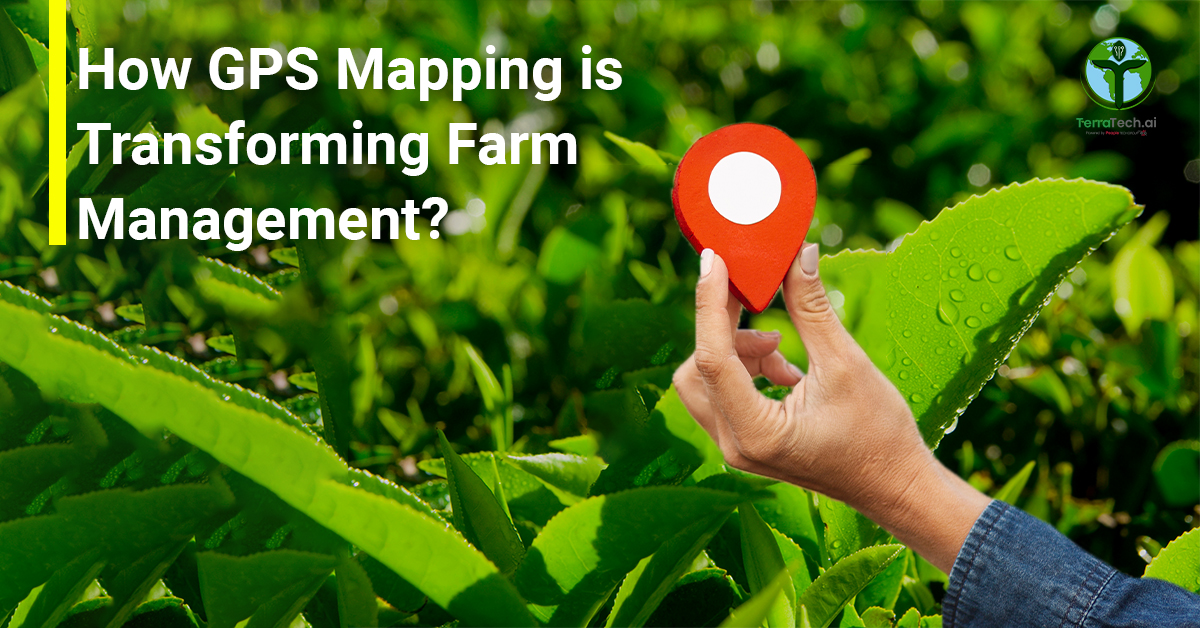How GPS Mapping is Transforming Farm Management
In modern agriculture’s dynamic and ever-evolving landscape, incorporating technology has become indispensable for achieving maximum efficiency and productivity. GPS (global positioning systems) mapping is one such technology revolutionizing farm management. By leveraging the power of GPS in agriculture, farmers gain precise insights into their fields, streamline operations, and make informed decisions. This blog discusses GPS in farming – providing an overview of its concepts and exploring its numerous uses.
GPS in farming involves using satellite-based positioning systems to determine precise locations. These satellites orbit the Earth and emit signals that GPS receivers on the ground. The combination of GPS mapping technology with GIS (geographic integration system) software helps create detailed maps that determine accurate location coordinates and aid in farming operations.
Uses of GPS in Agriculture
- Precision Agriculture and Optimized Resource Allocation: GPS mapping is essential to precision agriculture, which enables farmers to optimize resource allocation. By accurately mapping fields and capturing data on soil collections, topography, and other variables, farmers can create detailed field maps. These maps identify soil fertility, moisture levels, and other factors that impact crop growth. This information helps farmers apply agriculture inputs precisely, resulting in efficient resource utilization, reduced input costs, and improved yields.
- Accurate Soil Mapping and Nutrient Management: A fundamental factor that influences crop productivity is soil health. The agriculture-based GPS mapping enables farmers to collect soil samples at precise field locations. The mapped coordinates help create soil fertility maps highlighting nutrient deficiencies or imbalances across the farm. Farmers can optimize yields, reduce nutrient runoff, and promote long-term soil health by providing crops with precise agricultural inputs.
- Effective Crop Scouting and Pest Management: Monitoring and managing pests and other disease outbreaks is crucial for successful crop production. GPS mapping aids in effective crop scouting by providing farmers with accurate locations and visual representations of crop health. By overlaying crop health data onto field maps, farmers can identify areas that require closer inspection or targeted pest control interventions. This enables the precise application of pesticides, minimizes environmental impact, and maximizes crop protection.
- Improved Irrigation and Water Management: Water scarcity and inefficient irrigation pose significant challenges to farming operations. GPS mapping in agriculture helps farmers optimize irrigation and water management. An in-depth understanding of soil moisture patterns helps farmers implement site-specific irrigation strategies to ensure precise water application, minimize water wastage, reduce energy consumption, and promote efficient plant growth.
- Enhanced Machinery Guidance and Autonomous Operations: GPS-guided machinery, such as tractors and harvesters, follow pre-determined routes. This reduces overlap, optimizes fuel consumption, and minimizes soil compaction. Advanced agricultural GPS systems support autonomous operations, allowing farm machinery to perform tasks with minimal human interference. This increases operational efficiency and reduces manual labour for other essential farm activities.
Exploring GPS Mapping Tools and Technologies for Efficient Navigation and Data Analysis
- GPS Receivers & Satellite Systems form the backbone of GPS mapping technology by providing accurate positioning and navigation information. Other satellite systems like GLONASS and Galileo also contribute to global position accuracy. GPS receivers receive signals from satellites, allowing users to determine precise locations.
- Geographic Information System (GIS) Software is vital in GPS mapping and analysis. GIS software enables users to store, manage, analyze, and visualize spatial data. GIS allows farmers to combine GPS data with land boundaries, topography, and infrastructure, to gain valuable insights. GIS facilitates informed decision-making, spatial planning, and resource management.
- Remote Sensing & Aerial Imagery Technologies complement GPS mapping tools by providing detailed and up-to-date visual data. The combination of GPS data with aerial imagery of the Earth’s surface captured by drones or satellites enables accurate mapping and monitoring of landscapes, vegetation, and infrastructure. Remote sensing techniques like LiDAR (Light Detection and Ranging) provide 3D data to enhance the precision of mapping and analytical tasks.
In conclusion, GPS mapping has become crucial in modern farm management, bringing numerous benefits and transforming agricultural practices. Throughout this blog, we discuss the significance of GPS in agriculture and its various applications. Looking ahead, we anticipate exciting advancements revolutionizing the field of GPS technology.
One groundbreaking AgriTech platform that has been instrumental in driving agricultural progress is TerraTech. TerraTech empowers farmers with valuable insights, improved decision-making, and embracing sustainable farming practices by harnessing state-of-the-art technologies such as sensors, IoT, and drones. The future of agriculture holds great promise as GPS technology continues to evolve

